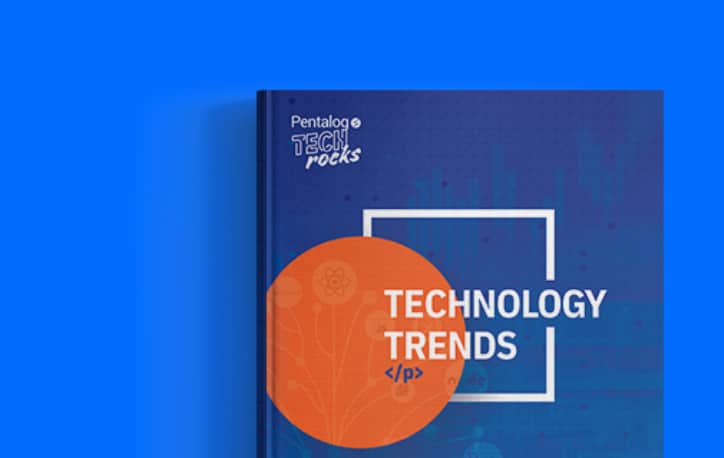Last Updated on May 2, 2025
64% of organizations manage at least 1 petabyte of data and 41% manage at least 500 petabytes. But fewer than half (49%) of data practitioners have high trust in their data.
Do you know what this means?
You don’t need more data. You need data you can trust.
As organizations recognize the need for better data management processes, the concepts of data governance and stewardship have moved from IT backrooms to boardroom discussions. What once were operational afterthoughts have now become strategic pillars of data strategy.
Companies that embed these disciplines early avoid costly rework, enable faster insights, and build a competitive edge through better decision-making. And those that ignore them are stuck reacting to broken systems and flawed decisions.
If you don’t want your data teams wasting hours hunting down the right version of a dataset, dashboards delivering conflicting metrics, and your AI initiatives stall because no one’s confident in the underlying data, it’s time to make data governance and stewardship your priority.
What Trusted Data Means (and Why It Matters)
Trusted data isn’t just “accurate” data. It’s data you can rely on to make decisions, serve customers, comply with regulations, and operate efficiently — without hesitation or second-guessing.
Without trust:
- Decisions slow down
- Risks multiply
- Opportunities slip away
Why Data Trust Is Breaking Down?
Today, data lives in dozens – sometimes hundreds – of systems. It’s owned by different teams, defined in different ways, and often duplicated across tools.
Most organizations didn’t plan for this data sprawl. As a result, they are struggling. With the increase in the volume and velocity of data, the inconsistencies have also increased. Marketing reports don’t match sales dashboards. Operations rely on data that finance doesn’t trust. Meanwhile, AI and analytics teams are expected to deliver insights from data no one’s confident in.
Without clear rules, data ownership, and processes, data quality becomes everyone’s problem and no one’s job. And over time, that erodes trust.
This isn’t about bad intentions or broken tools. It’s about complexity outpacing control.
Until that changes, data will keep being a liability for many instead of an asset.
Common Misunderstandings That Prevent Effective Governance and Stewardship
Many organizations struggle with data governance because of misconceptions or errors in judgment that delay progress and lead to inefficiencies. Here are some of those most common misunderstandings:
“We don’t need governance yet.”
Even small organizations can suffer from data issues (due to poor data quality), misaligned priorities, and unclear ownership. Without a data governance program from the start, it’s harder to correct bad practices later.
“It’s just an IT issue.”
While IT plays a key role in governance, it’s not solely an IT job. Effective data governance requires cross-functional leadership, involving data users from business and technical teams working together to align on data policies, standards, and priorities.
“We already have tools.”
Tools alone cannot ensure data accuracy, privacy, trust, accessibility, and usability, which is why governance protocols include defining roles, creating clear processes, and setting data quality standards.
“We’ll deal with it later.”
Postponing governance efforts leads to rework, wasted investment, and missed opportunities. It can result in data inconsistencies, higher costs for fixing issues, and valuable insights slipping through the cracks (data braches).
What Data Governance and Stewardship Actually Mean
The terms ‘data governance’ and ‘data stewardship’ are often used interchangeable, but they’re not the same thing. They play different, but complementary roles in effectively managing data quality.
Data governance is about setting the rules of the game. It involves defining the policies, standards, roles, and rules for how data should be managed across the organization.
Think of data governance as the strategy that sets expectations around quality, compliance, data security and accountability. It describes who owns what, what ‘good data’ looks like, who has data access, and how it should be secured. Also, data governance refers to the strategic framework that keeps data aligned with business goals, regulatory needs, and quality standards.
Data stewardship is the execution of governance strategy. It involves enforcing data governance policies and rules into practice on a day to day basis– making sure data is entered correctly, maintained consistently, and used appropriately. It’s the data steward’s role to ensure the health of data in their domain, whether that’s customer info, product data, financials, or anything else. They apply the standards, flag issues early, maintain accuracy, and serve as the go-to resource for questions about specific datasets.
Governance and stewardship go hand in hand. Governance without stewardship is just theory. Stewardship without a governance framework is chaos.
Together, they create a system where data is not just managed, but also trusted – because there’s structure behind it, and people actively keeping it clean, accurate, consistent, and aligned to business needs.
Why Data Governance and Stewardship Are Now Strategic Priorities?
For a long time, data governance and stewardship were seen as back-end tasks. They were deemed important, but not urgent. That’s changing quickly.
Today, business leaders (most of them, if not all) realize that without trusted data, all their initiatives are at risk. Whether it’s incorporating AI or driving automation, improving customer experiences, or ensuring compliance, every business task relies on clean, consistent, well-managed data. And that doesn’t happen by accident.
Companies that incorporate governance and stewardship into their data strategy are not just better at data management, they also build confidence in their data, which translates into faster, more informed decisions, and a competitive edge.
Here are the key reasons why data governance and stewardship practices are becoming business priorities:
- Growing complexity: More data assets, more sources, and more systems increase inconsistency and risk.
- Business expectations: Data stakeholders demand information they can trust and easily access, but it’s often blocked by poor quality, unclear definitions, or duplicated records.
- AI and analytics pressure: Without governance, data insights are flawed, and automation spreads errors faster. With proper governance, organizations can build deeper understanding and drive maximum value from their data.
- Regulatory and reputational risks: Data mishandling is no longer just an internal problem for the IT department. It’s a business liability that can cause regulatory issues and also harm your reputation.
What Good Data Governance and Stewardship Look Like in Practice
Governance and stewardship may sound like abstract concepts, but when done right, they create clarity and confidence across the organization.
Here’s what effective data governance and stewardship looks like in practice:
- Clear ownership: Governance initiatives that are well-thought-out have clearly defined data owners and stewards who are accountable for the quality, security, and usability of company’s data. With improved data access management, people know who’s accountable for the data they rely on.
- Business-aligned policies: Governance standards are practical and focused on enabling business outcomes, not just satisfying technical aspects. They are understood and followed by data teams. Business-aligned governance policies also support risk management.
- Embedded stewardship: Data stewards work closely with operational teams to ensure that data is entered, maintained, and corrected in real time. They ensure efficient data storage.
- Consistent quality monitoring: Issues are spotted and addressed proactively through regular audits, quality metrics, and feedback loops, not months later, to maintain data assets.
- Cross-functional collaboration: While governance is supported by IT, it is driven by business units that depend on reliable data for decisions.
- Continuous improvement: Frameworks evolve to scale with new systems, markets, and regulations.
How Data Governance and Stewardship Strengthen Data Strategy
In organizations that get it right, governance is an active framework to keep data clean, secure, and usable. Here’s how data governance and stewardship strengthen your data strategy and improve business processes:
- Faster, better decisions: When teams trust the data in front of them, they move quicker and make smarter calls. Data governance sets the path for data-driven decision making and stewardship helps sustain the process.
- Less risk, more control: Clear roles and data governance policies reduce the chance of compliance failures, security breaches, and costly errors.
- More scalable systems: As data volume and complexity grow, frameworks for governance and stewardship prevent things from spiraling out of control.
- Stronger AI and analytics: AI models are only as good as the data that feeds them. Governance helps with the quality of that data, and data stewards ensure to maintain it.
Governance and stewardship are among the key differences in performance between high- and low-trust organizations. If your data is messy and not monitored, your business is guessing. That’s why the smartest companies are treating governance and stewardship as strategic imperative for competitive advantages.
Key Considerations for Building an Effective Governance and Stewardship Framework
Building a data governance and stewardship framework isn’t about launching a massive program overnight. It’s about making thoughtful moves that drive real trust and value.
Here’s where to focus when getting started:
Define clear roles:
Assign ownership and stewardship responsibilities at the dataset level. Everyone should know who’s accountable for what.
Align to business goals:
Governance policies should serve actual business needs—better decisions, faster insights, reduced risk—not just IT mandates.
Make it usable:
Policies must be practical and straightforward. Overly complex frameworks get ignored. Focus on clarity, simplicity, and relevance.
Secure executive sponsorship:
Leadership buy-in is essential for gaining momentum and organizational support. Governance initiatives gain traction faster when leaders champion the need for trusted data.
Start small, then scale:
Focus first on the highest-value, highest-risk datasets. Prove the model, refine it, and expand from there.
Build a culture of accountability:
Governance and stewardship aren’t one-off projects, it’s a shift in how the organization treats data. Encourage a culture where everyone takes ownership of data quality.
Effective governance and stewardship don’t happen by decree. They’re built step by step, by embedding structure, ownership, and trust into the way people work with data every day. The more organizations focus on these practices, the more resilient their data systems will become.
Why Starting Early Matters
Data governance and stewardship are foundational elements of any modern data strategy. Organizations that treat them as afterthoughts end up paying later – through costly cleanups, missed opportunities, compliance risks, and lost trust.
Starting early, even with small, practical steps, builds resilience into your data ecosystem. It makes growth smoother, decision-making sharper, and innovation faster. More importantly, it establishes a culture where companies do not just focus on data collection, but also on ensuring that their data is trusted and used with confidence.
As data volumes grow at exceedingly fast pace and AI-driven initiatives depend more heavily on reliable inputs, companies that invest now in structured governance and stewardship will be the ones positioned to lead – not scramble to catch up.
Need help establishing trust in your data?
DataMatch Enterprise (DME) can help you ensure data quality and consistency across systems – giving your data governance initiatives the foundation they need to succeed. Contact us today to learn more about how DME can support your efforts to create trusted data.





































